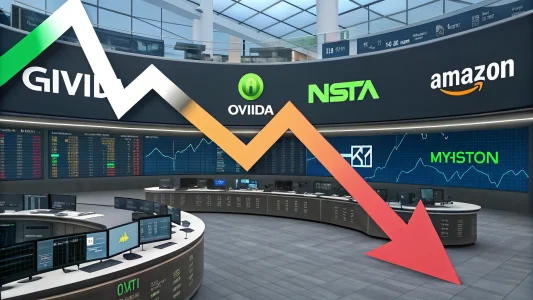In the ever-evolving world of finance, investment opportunities are as diverse as they are abundant. The options are virtually limitless, from stocks and bonds to real estate and commodities. However, amidst the plethora of choices, it is crucial to identify those investments that offer the most promising returns. One such opportunity that has recently come to the fore is infrastructure bonds.
Table of Contents
ToggleThe current investment landscape
The stock market has been on a meteoric rise, with many investors reaping substantial benefits. However, Vanguard, a leading investment management company, has projected that U.S. stocks will return just 4.3% over the next decade. This forecast, while still promising, is significantly lower than the returns investors have enjoyed in recent years.
In light of this, it is prudent for investors to explore other avenues that may offer higher returns. This brings us to the focus of this article: infrastructure bonds.
View this post on Instagram
A post shared by Taylor Sohns – CFP®, CIMA®, MBA – Finance (@lifegoalinvestments)
Understanding infrastructure bonds
Infrastructure bonds are debt securities issued by companies or governments to finance the construction or maintenance of infrastructure projects. These projects can range from roadways and train tracks to airports and cloud computing storage facilities. Essentially, when you invest in infrastructure bonds, you are investing in the very backbone of the economy.
The appeal of infrastructure bonds
The primary appeal of infrastructure bonds lies in their yield. Currently, the yield on infrastructure bonds stands at an impressive 10.9%. This is more than double the projected return on U.S. stocks over the next decade.
Moreover, the risk associated with infrastructure bonds is relatively low. The biggest risk to any bond investment is default — the inability of the issuer to pay the promised yield. However, the default rate on infrastructure bonds has historically been just 1.3%. This means that the chances of an investor losing their investment due to default are minimal.
Investing in infrastructure bonds
Investing in infrastructure bonds is straightforward. Investors can purchase these bonds through brokerage firms, banks, or directly from the issuer. The minimum investment amount varies depending on the issuer, but it is typically quite affordable, making infrastructure bonds accessible to many investors.
The future of infrastructure bonds
The future of infrastructure bonds looks promising. As the world continues to develop, the demand for infrastructure projects is only set to increase, driving the demand for infrastructure bonds. Moreover, as governments and companies continue to seek ways to finance these projects, the supply of infrastructure bonds is also likely to increase. This combination of increasing demand and supply bodes well for the future of infrastructure bonds.
Conclusion
In conclusion, infrastructure bonds present a compelling investment opportunity. They offer a promising alternative to traditional stock investments with a high yield and a low default rate. Moreover, by investing in infrastructure bonds, investors are not only securing their financial future but also contributing to the development of the economy. Therefore, for those looking for investment opportunities that offer high returns and low risk, infrastructure bonds are certainly worth considering.
As always, it is important to conduct thorough research and seek professional advice before making any investment decisions. If you need assistance in finding investment opportunities, Lifegold is here to help.
Frequently Asked Questions
Q. What is the current investment landscape?
The stock market has been on the rise, with many investors reaping substantial benefits. However, Vanguard, a leading investment management company, has projected that U.S. stocks will return just 4.3% over the next decade. This forecast is significantly lower than the returns investors have enjoyed in recent years. Therefore, it is prudent for investors to explore other avenues that may offer higher returns.
Q. What are infrastructure bonds?
Infrastructure bonds are debt securities issued by companies or governments to finance the construction or maintenance of infrastructure projects. These projects range from roadways and train tracks to airports and cloud computing storage facilities. When you invest in infrastructure bonds, you are investing in the very backbone of the economy.
Q. What is the appeal of infrastructure bonds?
The primary appeal of infrastructure bonds lies in their yield. Currently, the yield on infrastructure bonds stands at an impressive 10.9%. This is more than double the projected return on U.S. stocks over the next decade. Moreover, the risk associated with infrastructure bonds is relatively low. The biggest risk to any bond investment is default, but the default rate on infrastructure bonds has historically been just 1.3%.
Q. How can I invest in infrastructure bonds?
Investing in infrastructure bonds is straightforward. Investors can purchase these bonds through brokerage firms, banks, or directly from the issuer. The minimum investment amount varies depending on the issuer, but it is typically quite affordable, making infrastructure bonds accessible to many investors.
Q. What is the future of infrastructure bonds?
The future of infrastructure bonds looks promising. As the world continues to develop, the demand for infrastructure projects is set to increase. This will drive the demand for infrastructure bonds. Moreover, as governments and companies continue to seek ways to finance these projects, the supply of infrastructure bonds is also likely to increase. This combination of increasing demand and supply bodes well for the future of infrastructure bonds.
Q. Are infrastructure bonds a good investment?
Infrastructure bonds present a compelling investment opportunity. They offer a promising alternative to traditional stock investments with a high yield and a low default rate. Moreover, by investing in infrastructure bonds, investors are securing their financial future and contributing to the economy’s development. Therefore, for those looking for investment opportunities that offer high returns and low risk, infrastructure bonds are certainly worth considering.

















